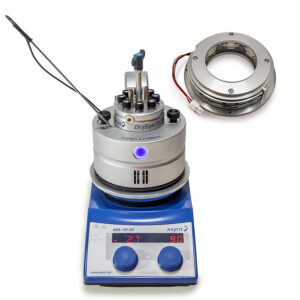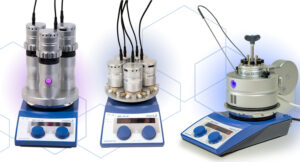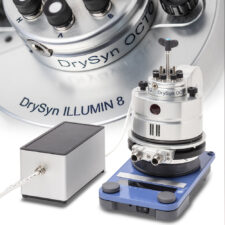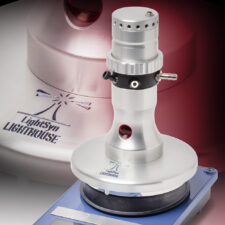
Photocatalysis has garnered increasing attention in recent years, but it’s by no means a new concept. It was first discussed over a hundred years ago but was largely dismissed as a scientific novelty for most of the 20th Century. However, pioneers responding to social concerns about effective and sustainable hydrogen production breathed new life into technology during the 1970’s. It’s since had a transformative influence on many scientific fields. In short: photocatalysis involves the acceleration of photoreactions in the presence of a catalyst. Photocatalytic materials effectively leverage the energy derived from light to propel a diverse range of chemical reactions.
Deep Dive into Photoredox Chemistry
Although there are many forms of photocatalysis, we’ll primarily focus on photoredox chemistry in this article. This is a form of photocatalytic process that engages light as a resource to enable oxidation-reduction (redox) reactions. Here, visible light photo-redox catalysts, like Eosin Y, are particularly noteworthy. By harnessing these catalysts, the transition from ground state to an electronically excited state becomes feasible, thereby enabling the generation of radical species and facilitation of subsequent redox reactions. Furthermore, by combining photoredox-mediated hydrogen atom transfer (HAT) with other forms of catalysis, it’s possible to synthesise complex structures, such as chiral building blocks, which are pivotal in drug discovery with high selectivity reducing waste from side products and purification processes.
Practical Applications of Photoredox Reactions
- Organic Synthesis: Photoredox catalysis has emerged as an essential instrument in organic chemistry, facilitating the assembly of intricate organic structures, promoting radical chemistry, and advancing the diastereoselective synthesis of cyclic compounds.
- Environmental Applications: This form of photocatalysis has profound implications for environmental sciences. It has been implemented in water purification processes and pollutant degradation, thereby amplifying the prospects for sustainable development.
- Medicinal Chemistry: Photoredox catalysis has been vital in establishing innovative synthetic pathways for the creation of drug-like compounds and pharmaceuticals, notably influencing the ADME-tox properties of molecules.
- Artificial Photosynthesis and Chemical Fuel Production: The technique has been applied in the development of artificial photosynthesis systems and the creation of chemical fuels, such as hydrogen from water splitting, proving instrumental in the energy sector.
- CO2 Reduction: Organic photoredox catalysts have been deployed for one-electron CO2 reduction, a critical process for converting CO2 into utilitarian chemicals and fuels, contributing significantly to efforts against global warming.
- Catalyst-Controlled Stereoselective Reactions: Dual catalysis involving a photoredox catalyst and a chiral metal/organic catalyst has emerged as a potent strategy for achieving elusive stereoselective reactions.
Solutions for Photocatalysis
Whilst the use of photoredox catalysis has granted researchers access to effective reaction pathways certain challenges remain, such as reaction rates and scalability, that need to be addressed. For instance, scalability is a crucial factor for ensuring the industrial viability of photocatalysis applications. To resolve these issues, Asynt has developed intuitive new platforms for the advancement of methods using photoredox catalysis, focusing on improving reaction efficiency and scalability – as well as improving safety in the laboratory for those carrying out photochemical reactions.
Advancing Photocatalysis with Asynt
At Asynt, we want to pave the way for more efficient and sustainable scientific research through innovation. Optimising lab processes doesn’t need to be costly or complicated. We helped Liverpool ChiroChem to develop novel 2-Aryl N-Heterocycles with our Illumin8 parallel photoreactor; a unique benchtop photoreactor platform that is simple to set up and easy to use. Each of the available 8 positions with the Illumin8 has a dedicated 10 w rated LED COB source, ensuring even photon flux to each parallel reaction. The Illumin8 is designed with safety interlocks to ensure light-tight photochemistry, and has an optional base that can be connected to your preferred circulating thermostat for active temperature control of your photochemical reactions.
We also provide options for single batch photoreactions and photochemistry in Flow Chemistry, as well as fully bespoke solutions, allowing you to customise rather than compromise. Contact a member of the team today if you’d like to learn more.
References and further information
- Crisenza, G.E.M., Melchiorre, P. Chemistry glows green with photoredox catalysis. Nat Commun 11, 803 (2020). https://doi.org/10.1038/s41467-019-13887-8
- Bogdos MK, Pinard E, Murphy JA. Applications of organocatalysed visible-light photoredox reactions for medicinal chemistry. Beilstein J Org Chem. 2018 Aug 3;14:2035-2064. doi: 10.3762/bjoc.14.179. PMID: 30202458; PMCID: PMC6122060.
- Kareesa J. Kron, Andres Rodriguez-Katakura, Rachelle Elhessen, and Shaama Mallikarjun Sharada. ACS Omega 2021 6 (49), 33253-33264. DOI: 10.1021/acsomega.1c05787
- https://www.sciencedirect.com/topics/chemistry/photoredox









